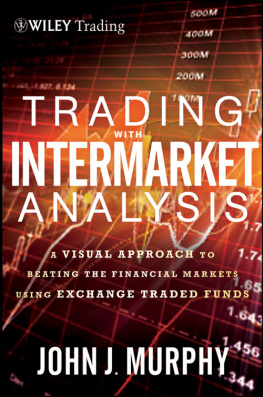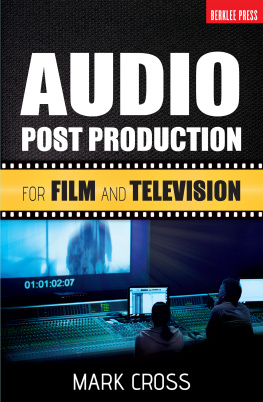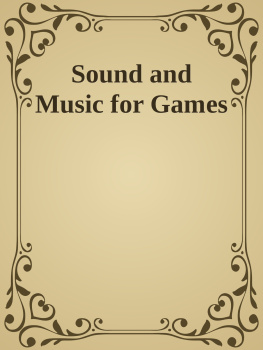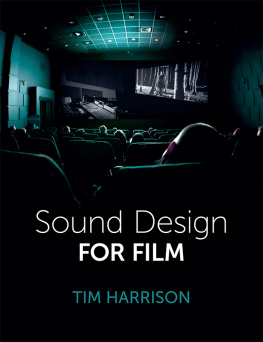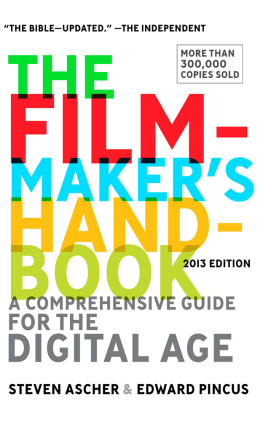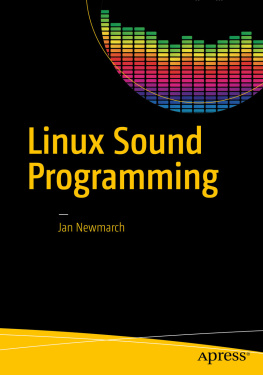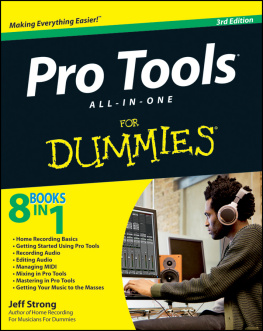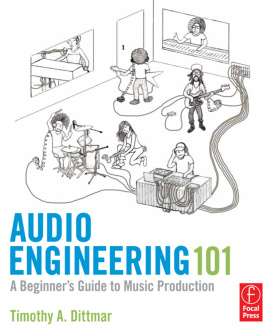The Cinetech Guides to the Film Crafts
Series Editor: David Landau

CONTENTS
When I was first approached by my editor David Landau to write a book about location sound recording, I immediately accepted. After all, I was aware that very few volumes have been written about location sound. It is no surprise, as the vocation of audio has many different types of work one can choose as a sound person. Its like we are talking about chefs. From the backyard picnic burger-flipper (the personal documentarian) to the five-star chef (feature film mixer) they all deal with the same medium and techniques, and face very similar challenges under wildly different conditions and pressures.
This volume is intended for those in the very early stages of discovery of the great process of capturing sound for the moving image. With this reader in mind, I hope to provide an overview, often briefly introducing concepts to which entire works could be devoted. The guiding principle throughout is to shed light on the practical applications of theory rather than the theory itself.
The wide-ranging scope of types of sound work covered in this volume mirrors my own thirty year career. A career that seems to be all over the map, sometime literally.
The level of information presented is calibrated by my experience of teaching 13 years in the film department of an art school. Teaching (and writing) to this level of young people has had the unexpected benefit not only of ordering the thought process but also of asking oneself: Why is it done that way?
Part of the narrative of this book is the liberal use of my own personal experiences. These are only intended, by example, to carry on in the great oral tradition of pilots and sailors everywhere saying: I learned from this You can too.
To this day, I still learn something new on every job I work on.
David Landau, my first editor.
Jerry Bruck/Posthorn Recordings, for decades a guiding light of audio knowledge.
John McCormick who, in the beginning, was the one I could call in a panic.
Kira Smith, a stunning example of professionalism.
Alex Noyes, a double threat: an academic who works in the industry.
RESOURCES
A selection of Bresson quotes throughout are from Notes on the Cinematographer, trans. Jonathan Griffin (Los Angeles: Green Integer, 1997).
No matter how exotic a camera is, be it film or video, the sound that goes with this stylish image must always be as clear and as natural as possible.
Visual illusions are what make the moving image great. Fluid movement, narrow depth of field, and high speed exposures all constantly transform the images that we watch.
However, if the exotic moving images are of people, and those people are communicating, it really is only a lovely kaleidoscope unless the voices can be understood.
The baseline of any film is the ability of the viewer to understand the dialog of the people on screen.
This book will give the reader the knowledge, in virtually any situation, to record the voices in frame cleanly and naturally.
We who do our work on location deal with many challenges.
We must face the reality that it is not our choice where we work, but a group decision that encompasses the vision of the director and his script, the available locations to fulfill this vision, and the schedule that allows the production to shoot at this location in a given timeframe.
If you are working on a documentary, the location is often the site where a historically significant event took place. It may be a nightmare for audio, but it just has to be there.
For example, you may be working on an industrial film, and a particular machine must be featured in the shot, and the designer must talk about it to camera. In the factory, while the factory is in operation.
Or if you are covering breaking news, this is often noisy, or happening in really loud and difficult audio situations.
There may be hurricanes, riots, and wars, but we still must hear the correspondent ask the questions, and hear the answers.
A location sound recordist has to deal with what most of us automatically correct. In life, in a lively sonic environment, on board a plane, in a taxi, or at a sporting event, we as humans listen and comprehend using intellect to dig out the spoken word from the background gumbo of crazy sound.
We sound recordists cannot depend on this human filter and must get just the intended sound, whether it be words, music, or effects, as cleanly and as naturally as possible.
This book will give those unaware of the sonic world a basic understanding of the physics of sound, and the best ways to capture it.
It will guide the single filmmaker through the minefield of having to do absolutely everything and still record great tracks.
The book will present a number of ideas to those who are just entering the world of professional audio.
Sound has many rewards, technical mastery, logistic wizardry, personal growth, and the unexpected pleasure of finding yourself in situations you would never, ever imagine yourself in. The headwaters of the Amazon? Next week? Sure.
Come and be part of it.
The soundtrack invented silence.
Robert Bresson
Discovering the invisible forces of sound: how does sound work and how do we hear?
Before we can capture sound waves for our moving images, we must first understand its properties and how they affect us. Welcome to an invisible world of tremendous power and boundless possibilities. Sound will become your most powerful tool.
In order to capture the waves, we first must understand them.
WHAT WE WILL LEARN IN THIS CHAPTER
What is sound?
How do we measure something we cant see?
How do we hear?
How does sound energy respond to atmosphere and distance?
Hearing is one of our most vital senses. It helps us communicate, judge distance, and generally connect with our world.
It is also one of our main ways of staying safe, yet it is invisible.
Before we learn to capture sound waves, we must first understand how they work.
Lets go down into the subway.

The subway is a fascinating place, full of interesting science, especially physics.
Never thought of it that way?
Well, sound itself is full of science and physics.
To understand the medium you are dealing with, you have to know a little about how it works.
The subway is full of reverberation.
Whats reverberation?
Our Earth is surrounded by an atmosphere of dense gases. When something moves, it moves the atmosphere as well. This movement creates waves. These waves, when processed by our sense of hearing, are interpreted by our brains as sound.
Reverberation is the waves you hear bouncing around after the musician on the platform hits his last note.
The waves echo or linger in the big hollow tube of concrete. It makes his excellent playing sound full and terrific.
It is a product of the space and atmosphere that surround him.
Clap your hands once loudly on the platform. Hear the echo? This is a live space.
You have just used the most important tools you possess.
1. Your ears (the organ of hearing).
2. Your own judgement, as to the nature of the sound you hear.
The first you are born with.
The second you develop by being aware of what surrounds you all the time, day in, day out.
Next page

